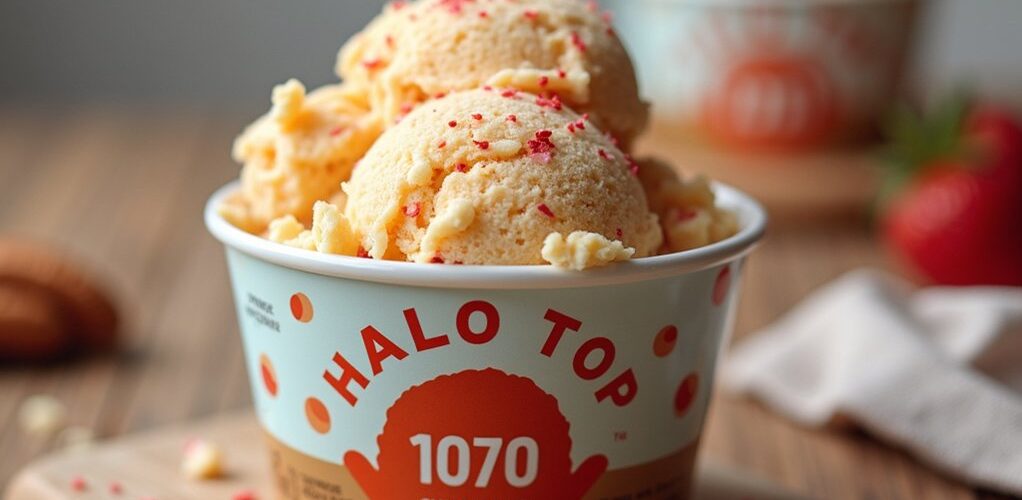
Halo Top ice cream offers a lower-carb alternative to traditional ice cream, containing 4-10 grams of net carbs per half-cup serving compared to regular ice cream's higher carb content. The brand achieves this through natural sweeteners like erythritol and stevia, while maintaining decent taste and texture. Popular low-carb flavors include Birthday Cake and Peanut Butter Cup at 5g net carbs per serving, though portion control remains essential. Understanding serving sizes and specific flavor variations helps maximize this dessert's potential in a low-carb lifestyle.
Key Takeaways
- Halo Top contains 4-10 grams of net carbs per serving, making it relatively low-carb compared to traditional ice cream.
- One half-cup serving of Halo Top has 137 calories and 6 grams of sugar versus 266 calories in regular ice cream.
- The brand uses erythritol and stevia as natural sweeteners to maintain low net carbs while providing sweetness.
- Best low-carb flavors include Birthday Cake and Peanut Butter Cup with 5g net carbs per serving.
- Moderation is crucial as consuming a full pint can total 24-40g net carbs, potentially exceeding daily low-carb limits.
Understanding Halo Top's Net Carb Content
While Halo Top ice cream has gained popularity among health-conscious consumers, understanding its net carb content is essential for those following low-carb or ketogenic diets.
Most Halo Top ice cream varieties contain between 4 to 10 grams of net carbs per serving, making them a notably lower-carb alternative to traditional ice cream. The calculation of net carbs involves subtracting fiber and sugar alcohols from the total carbohydrate content, as demonstrated in their Chocolate flavor, which contains 13 grams of total carbs but only 6 grams of net carbs per half-cup serving.
While these keto-friendly varieties offer a tempting dessert option, moderation is key, as consuming an entire pint could result in 6 to 10 grams of net carbs, potentially affecting ketosis for those strictly monitoring their carbohydrate intake. Following a ketogenic diet can help manage blood sugar levels, as it greatly reduces blood glucose and stabilizes HbA1c, which is beneficial for individuals with type 2 diabetes.
Comparing Halo Top to Traditional Ice Cream
Since consumers increasingly seek healthier dessert alternatives, the nutritional differences between Halo Top and traditional ice cream warrant careful examination.
When comparing these products, Halo Top contains considerably fewer calories, delivering 280-360 calories per pint compared to traditional ice cream's 800-1000 calories.
A standard serving of Halo Top provides notable nutritional advantages, containing just 137 calories and 6 grams of sugar, while traditional ice cream typically contains 266 calories and 14 grams of sugar per serving.
Halo achieves its lower carb profile through the use of natural sweeteners like erythritol and stevia, resulting in approximately half the sugar content of conventional ice cream.
Additionally, Halo Top offers more protein per serving, though it remains a processed food that requires portion control for ideal health benefits.
Best Low-Carb Halo Top Flavors
For consumers following a low-carb lifestyle, several Halo Top flavors stand out as particularly suitable options. Among the best Halo Top selections, Birthday Cake and Peanut Butter Cup lead with just 5g net carbs per serving, while containing between 70-80 calories per serving. Vanilla Bean and Strawberry flavors contain slightly higher net carbs at 6g each, but maintain the same low caloric content. The ketogenic diet's low carbohydrate intake prompts the body to enter ketosis, a state that supports fat burning and reduced hunger.
| Flavor | Net Carbs | Calories |
|---|---|---|
| Birthday Cake | 5g | 70 |
| Peanut Butter Cup | 5g | 80 |
| Vanilla Bean | 6g | 70 |
When selecting low-carb options, it's worth noting that flavors like Caramel Macchiato and Candy Bar contain higher net carbs, making them less ideal for strict carb-conscious diets.
The Role of Sugar Substitutes in Halo Top
Halo Top's innovative approach to ice cream relies on a strategic blend of sugar substitutes, primarily organic stevia and erythritol, which work together to create sweetness with minimal caloric impact.
The combination of stevia, which provides intense sweetness at zero calories, and erythritol, which contributes minimal calories while avoiding digestive issues common to other sugar alcohols, allows Halo Top to achieve its signature taste profile.
These carefully selected sweeteners not only maintain the ice cream's appealing flavor but also help keep net carbohydrates low, typically between 6-10 grams per serving, while offering the additional benefit of being tooth-friendly compared to traditional sugar.
Sugar Alternatives Explained
Understanding how Halo Top achieves its signature sweetness while maintaining remarkably low sugar content reveals the innovative use of two primary sugar alternatives: organic stevia and erythritol.
These sugar substitutes work synergistically to create a satisfying sweetness profile without the caloric impact of traditional sugar. Erythritol, containing just 0.24 calories per gram, provides bulk and sweetness without causing digestive issues common to other sugar alcohols.
Meanwhile, stevia, which is 200-300 times sweeter than sugar, delivers intense sweetness without adding calories or carbohydrates. This combination makes Halo Top particularly suitable for those following low-carb or ketogenic diets.
Additionally, these sugar alternatives offer dental benefits, as they don't contribute to tooth decay like conventional sugar does.
Carb Impact Per Sweetener
The specific carbohydrate impact of different sweeteners in Halo Top's formula demonstrates how each sugar substitute contributes to the overall nutritional profile.
The primary sweeteners, erythritol and stevia, play vital roles in maintaining low net carbs while preserving flavor and texture. Erythritol's minimal caloric content of 0.24 calories per gram makes it particularly suitable for low-carb diets, as it doesn't greatly affect blood glucose levels.
The combination of these sweeteners enables Halo Top to achieve impressive nutritional metrics, with some flavors containing only 2-3g net carbs per serving.
This is evidenced in their chocolate flavor, which contains just 40g net carbs per pint, making it a viable option for those monitoring their carbohydrate intake while still enjoying frozen treats.
Ketosis and Halo Top Compatibility
The impact of Halo Top ice cream on ketosis varies considerably based on serving size and individual carbohydrate tolerance, with most flavors containing between 4g to 10g of net carbs per half-cup serving. Regular ketone testing becomes essential for keto dieters incorporating Halo Top into their meal plans, as consuming a full pint could potentially disrupt ketosis with up to 40g of net carbs. While the ice cream's sugar substitutes help minimize the glycemic impact, the presence of small amounts of cane sugar in certain flavors necessitates careful portion control and monitoring of daily carbohydrate limits. Additionally, the keto diet's ability to enhance insulin sensitivity can help in managing blood sugar levels when consuming sweet treats like Halo Top.
Net Carb Impact Analysis
Monitoring net carb intake becomes particularly essential when incorporating Halo Top ice cream into a ketogenic lifestyle, as its carbohydrate content can greatly impact ketosis maintenance.
With net carbs ranging from 6g to 10g per serving, Halo Top offers a viable low-carb option for those following a keto diet, provided proper portion control is maintained. Individual serving sizes, typically 1/2 cup, contain approximately 5g of carbs and 70-90 calories.
However, consuming an entire pint can quickly accumulate 24g to 40g of net carbs, potentially exceeding daily ketogenic requirements.
For best results, keto dieters should focus on flavors with lower net carbs, such as Chocolate with 6g per serving, and carefully measure serving sizes to guarantee continued ketosis maintenance.
Ketone Testing Results
Regular ketone testing provides valuable insights into how Halo Top ice cream consumption affects individual ketosis levels, offering concrete data for optimizing dietary choices. Blood ketone meters deliver the most precise measurements, while ketone strips offer a convenient alternative for monitoring carb intake effects.
| Testing Method | Accuracy Level | Best Time to Test |
|---|---|---|
| Blood Meter | High | Morning Fasting |
| Urine Strips | Moderate | Post-Consumption |
| Breath Meter | Variable | Before/After Meal |
For ketogenic dieters, measuring ketone levels before and after consuming Halo Top can reveal individual tolerance to its net carbs. This data helps determine appropriate portion sizes while maintaining ketosis. Since responses vary among individuals, consistent testing enables consumers to make informed decisions about incorporating this low-carb ice cream into their dietary plans.
Serving Size Guidelines for Low-Carb Dieters
Understanding proper serving sizes becomes essential for low-carb dieters who want to enjoy Halo Top ice cream while maintaining their dietary goals. The recommended serving size of one-half cup aligns with low-carb dietary guidelines while facilitating portion control. This serving typically contains between 5-10 grams of net carbs, making it compatible with most low-carb eating plans.
For those following strict low-carb diets, limiting consumption to one or two servings is vital, as consuming an entire pint can result in up to 56 grams of total carbs. This amount may exceed daily carbohydrate limits for maintaining ketosis. Careful tracking of macronutrients and adherence to recommended serving sizes enables low-carb dieters to incorporate Halo Top into their meal plans without compromising their nutritional objectives.
Additionally, incorporating healthy low-carb snacks like cheese crisps or beef jerky can help maintain satiety and reduce the temptation to overindulge in sweet treats like ice cream.
Dairy vs. Non-Dairy Carb Content Analysis
Halo Top's dairy ice cream varieties maintain consistently lower net carb counts, ranging from 4-10 grams per serving, with their chocolate flavor offering the lowest at 6 grams per half cup.
The non-dairy alternatives, which rely on coconut cream as a base, typically contain slightly higher carbohydrate content, reaching up to 10 grams of net carbs per serving despite using the same sweetener combination of erythritol and stevia.
While dairy options like Vanilla Bean and Strawberry provide predictable carb counts around 6 grams net per serving, non-dairy flavors show greater variation in their carbohydrate content, requiring careful label examination for those monitoring their carb intake.
Dairy Carb Content Breakdown
A thorough analysis of carbohydrate content reveals notable differences between Halo Top's dairy and non-dairy ice cream varieties. The dairy flavors consistently maintain 6-10g of net carbs per half-cup serving, positioning them as a moderate low-carb option for those monitoring their carbohydrate consumption.
With the inclusion of alternative sweeteners like erythritol and organic stevia, Halo Top effectively reduces overall sugar content while preserving taste.
The Chocolate flavor exemplifies this balance with 13g total carbs and 6g net carbs per serving. However, consumers should carefully review nutritional labels, as certain flavors containing additional ingredients or toppings may exceed these baseline carbohydrate levels.
This variation is particularly evident in specialty flavors, where mix-ins and flavor enhancers can impact the final carbohydrate count.
Plant-Based Options Compared
When comparing dairy and non-dairy varieties of Halo Top ice cream, consumers find remarkably similar carbohydrate profiles despite their distinct ingredient compositions. The plant-based options maintain comparable net carbs per serving to their dairy counterparts, typically ranging from 6g to 10g, while offering suitable alternatives for those following dairy-free dietary preferences.
The dairy-free ice cream variants incorporate alternative ingredients like coconut cream and specialized sweetener blends, yet maintain similar calories per pint as traditional versions.
For example, while the dairy Peanut Butter Cup contains 80 calories and 5g net carbs per serving, the plant-based options deliver equivalent low in net carbs content through different formulations.
Though texture may vary due to the absence of cream, these alternative options provide viable low-carb choices for those seeking dairy-free alternatives.
Sugar Alcohols and Their Impact
Several sugar alcohols play an essential role in Halo Top's successful formulation, with erythritol emerging as the primary sweetening agent. At just 0.24 calories per gram, erythritol serves as an ideal component for low-carb diets, helping Halo Top maintain its position as a diet-friendly frozen dessert. Unlike other sugar alcohols, erythritol is absorbed into the bloodstream but not metabolized, effectively reducing net carbs while minimizing digestive discomfort. Combined with organic stevia, this sweetening system keeps most Halo Top flavors between 5g to 10g net carbs per serving. The use of erythritol offers additional benefits, including protection against tooth decay compared to traditional sugars. While these sugar alcohols contribute to Halo Top's lower caloric profile, consumers should practice moderation to avoid potential digestive issues from excessive consumption. Additionally, xylitol's potential gastrointestinal issues highlight the importance of careful sweetener selection in maintaining digestive comfort and overall health.
Managing Portions on a Low-Carb Diet
Successful management of portion sizes remains essential for individuals following a low-carb diet while enjoying Halo Top ice cream. When consuming this keto ice cream option, understanding that a single serving equals half a cup helps maintain appropriate intake levels.
While Halo Top offers lower net carbs compared to traditional ice cream, portion control directly impacts daily carbohydrate limits. To effectively practice moderation, key strategies include pre-portioning servings into smaller bowls and carefully reviewing nutritional labels for accurate carb counts.
This becomes particularly important since consuming an entire pint can contribute up to 40g of net carbs, potentially disrupting ketosis or exceeding daily carb allowances. Monitoring ketone levels regularly is crucial for ensuring that carbohydrate intake does not disrupt ketosis and supports your keto lifestyle.
Managing portions through mindful serving practices helps individuals stay within their dietary guidelines while still enjoying this low-carb dessert option.
Reading Halo Top Nutrition Labels
Understanding Halo Top's nutrition labels proves crucial for individuals following a low-carb lifestyle. The labels provide thorough information about calories, fats, carbohydrates, and protein content per serving, with a standard serving size of half a cup.
To determine the true carbohydrate impact, consumers should calculate grams of net carbs by subtracting dietary fiber and sugar alcohol content from total carbohydrates.
Net carbs are found by taking total carbs and subtracting both dietary fiber and sugar alcohols from the equation.
Different Halo Top flavors vary in their carbohydrate content, with some options being particularly low in net carbs at around 5 grams per serving.
The nutrition label also indicates the use of alternative sweeteners like organic stevia and erythritol, making it suitable for those monitoring their sugar intake.
Careful label reading guarantees consumers can make informed choices that align with their dietary goals. Recognizing serving sizes ensures accurate nutrient tracking, as many packaged foods contain multiple servings.
Common Misconceptions About Carb Content
Many consumers struggle to distinguish between net carbs and total carbs when evaluating Halo Top's nutritional content, often overlooking the impact of sugar alcohols in their calculations. The presence of hidden carbohydrate sources, including milk proteins and natural sweeteners, can contribute notably to the overall carb count beyond what appears on the front label. Understanding these complexities becomes essential for those following ketogenic or low-carb diets, as misinterpreting the carbohydrate content could lead to unintended disruptions in their dietary goals. It's also important to be aware of hidden added sugars in low-fat products, as they can significantly affect carb intake and challenge adherence to a ketogenic diet.
Net Carbs Vs Total
When calculating carbohydrates in Halo Top ice cream, consumers often encounter confusion between total carbs and net carbs, leading to potential dietary miscalculations. Understanding this distinction is essential, particularly for those following a ketogenic diet, as net carbs are calculated by subtracting fiber and sugar alcohols from total carbohydrates.
| Flavor | Serving Size | Total Carbs | Net Carbs |
|---|---|---|---|
| Chocolate | 1/2 cup | 13g | 6g |
| Vanilla | 1/2 cup | 15g | 7g |
| Strawberry | 1/2 cup | 16g | 8g |
| Mint Chip | 1/2 cup | 17g | 9g |
While Halo Top markets itself as a low-carb ice cream alternative, consumers should note that consuming an entire pint could notably impact their daily carbohydrate limits, as servings typically contain between 6g and 10g of net carbs.
Sugar Alcohol Confusion
The complexity of sugar alcohols in Halo Top ice cream creates significant confusion among consumers trying to track their carbohydrate intake. Many people struggle to understand how sugar alcohols, particularly erythritol, affect their net carbs and overall dietary goals.
While erythritol contains only 0.24 calories per gram and minimally impacts blood sugar, calculating the total carbohydrate count requires careful consideration. The proper method involves subtracting both fiber and sugar alcohols from total carbs to determine net carbs.
However, consuming large quantities of sugar alcohols may still contribute to overall carbohydrate intake and potentially disrupt ketosis. For accurate tracking, consumers should carefully examine nutrition labels and understand that while sugar alcohols reduce effective carb counts, they aren't completely carb-free when consumed in substantial amounts.
Hidden Carb Sources
Despite its reputation as a low-carb alternative to traditional ice cream, Halo Top contains several hidden sources of carbohydrates that consumers often overlook.
While sugar substitutes like erythritol and stevia help reduce the net carbs, many flavors still contain significant amounts of cane sugar, contributing to a higher total carbohydrate count than expected.
Careful examination of nutrition labels reveals that some pints can contain up to 56 grams of total carbohydrates, with individual flavors varying between 5 and 10 grams of net carbs per serving.
Additional ingredients like prebiotic fiber also impact the carbohydrate content, though these may offer other health benefits.
For those following a strict low-carb diet, these hidden carb sources can potentially derail dietary goals if serving sizes aren't properly monitored.
Alternative Low-Carb Ice Cream Options
Modern grocery stores now stock numerous alternatives to Halo Top for health-conscious consumers seeking low-carb ice cream options.
Brands like Enlightened offer keto ice cream varieties with just 2-3 grams of net carbs per serving, while Rebel caters specifically to the ketogenic lifestyle with 4-8 grams per entire pint.
Those seeking dairy-free alternatives can opt for So Delicious No Sugar Added, which uses full-fat coconut milk and contains 9-10 grams of net carbs per serving.
For consumers who prefer traditional dairy bases, Edy's Slow Churned No Sugar Added line provides a middle-ground option with 14 grams of net carbs per serving.
These alternative ice cream options, along with Halo Top flavors, demonstrate the expanding market for low-carb desserts that cater to various dietary preferences and restrictions.
Blood Sugar Response to Halo Top
Understanding blood sugar impact remains a primary concern for consumers choosing between ice cream alternatives. Halo Top offers several advantages for blood sugar management through its reduced added sugars and strategic ingredient choices. The ice cream's sweeteners, including erythritol and stevia, have minimal impact on blood glucose levels compared to traditional ice cream formulations. With only 6 grams of sugars per 64-gram serving, Halo Top provides a significant reduction from conventional ice cream's typical 14+ grams. The product's protein content of 5 grams per serving may help moderate blood sugar response and increase satiety. However, consumers should monitor their portions, as the total carbohydrate content can still affect blood sugar levels when consumed in large amounts. Additionally, the keto diet improves insulin sensitivity and may support better blood sugar management when combined with low-carb options like Halo Top.
Calculating Total Daily Carb Allowance
When following a ketogenic diet, calculating total daily carb allowance requires careful attention to both net carbs and portion sizes. Most individuals need to limit their daily carb intake to 20-50 grams of net carbs to maintain ketosis, making precise tracking essential. For those incorporating Halo Top ice cream into their ketogenic diet, understanding serving sizes becomes vital. While a single serving contains manageable net carbs of 4-10 grams, consuming an entire pint can deliver up to 40 grams of net carbs. This significant amount could potentially exceed the daily allowance for strict keto adherents. The shift to fat burning in ketosis is facilitated by hormonal changes that reduce hunger and cravings. To successfully include Halo Top while maintaining ketosis, dieters must practice portion control and factor these carbs into their overall daily intake, ensuring they stay within their targeted range.
Impact of Mix-Ins on Carb Count
Although Halo Top markets itself as a low-carb ice cream option, the addition of mix-ins can dramatically alter its carbohydrate profile and impact ketogenic dieters. Different flavors containing ingredients like cookie pieces, brownie bits, or candy fragments can greatly increase the total carbs, with some varieties reaching up to 16g per serving compared to basic flavors at 6g net carbs.
- Cookie dough and brownie-based flavors typically contain the highest carb counts, with up to three times more carbohydrates than plain varieties.
- Mix-ins can add approximately 6g of sugar per serving, potentially affecting blood sugar levels.
- Portion control becomes essential when selecting flavors with mix-ins, as the cumulative carb count could quickly exceed daily ketogenic diet limits.
Frequently Asked Questions
Is Halo Top Ice Cream Low Carb?
Halo Top's carb content varies by flavor options, with nutrition facts showing 4-10 grams of net carbs per serving. Ingredient analysis reveals sugar substitutes contribute to lower carbohydrates compared to traditional ice cream.
What Are the Cons of Halo Top Ice Cream?
Halo Top's drawbacks include artificial ingredients, potential digestive issues from sugar alcohols, misleading caloric content labeling, less satisfying taste compared to regular ice cream, and questionable overall nutritional value.
Is Halo Top Okay to Eat on a Diet?
Halo Top can support dietary benefits through reduced calories and higher protein content. Success depends on portion control and calorie counting, while ingredient transparency helps consumers make informed choices despite taste comparison differences.
What Is the Best Low Carb Ice Cream?
Rebel and Enlightened lead best brands for low-carb ice cream, offering extensive flavor variety and superior texture compared to competitors. Both provide keto-friendly options with 2-3g net carbs and satisfying nutritional content.
Conclusion
While Halo Top offers a lower-carb alternative to traditional ice cream, consumers should carefully consider their individual dietary needs and carb allowances. Though marketed as a healthier option, its net carb content varies considerably between flavors, and sugar alcohols may affect blood sugar differently among individuals. Those following strict low-carb diets should monitor portions and possibly explore other alternatives, while casual consumers can enjoy Halo Top as a moderate-carb treat within their nutritional goals.
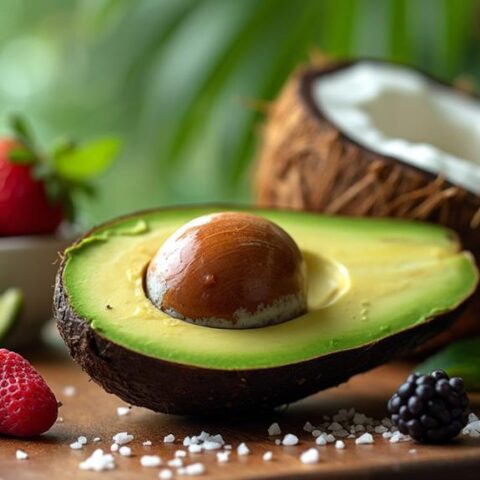
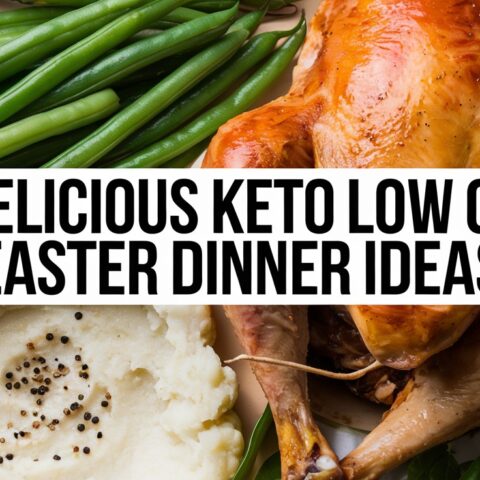
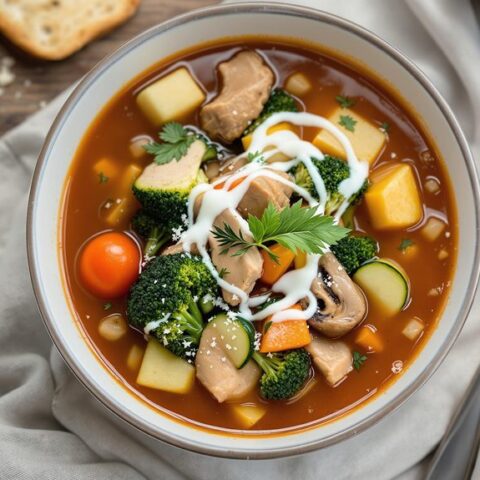
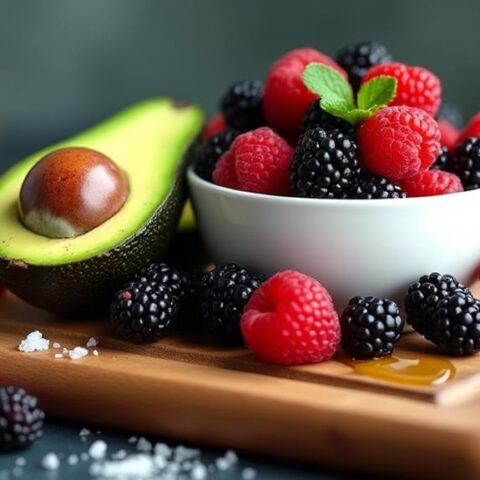

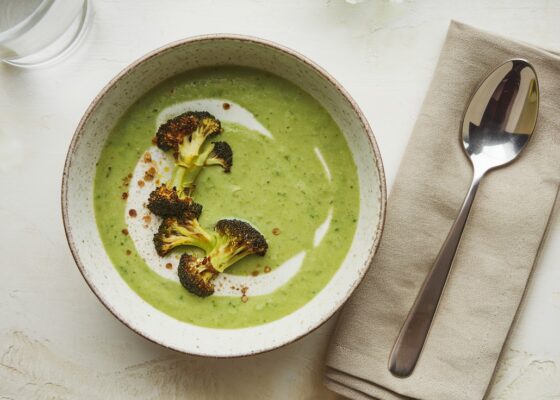

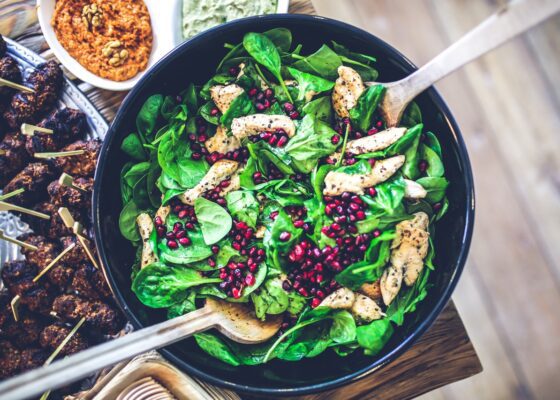

No Comments